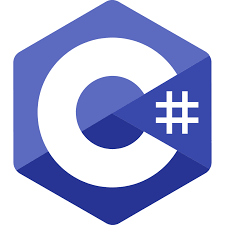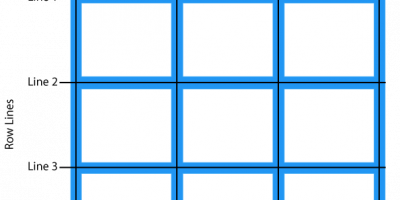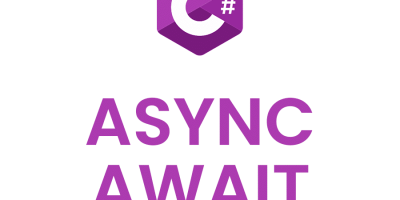C# (pronounced “C-sharp”) is a powerful, object-oriented programming language developed by Microsoft. It is widely used for developing desktop applications, web applications, games, and more. If you’re new to programming, this tutorial will walk you through the basics of C# and get you started with writing your first programs.
What is C#?
C# is a modern, high-level programming language designed for building a variety of applications. It is part of the .NET framework, which allows C# to interact seamlessly with other languages and frameworks supported by .NET.
Some key features of C#:
- Object-Oriented: C# supports the four pillars of object-oriented programming: encapsulation, inheritance, polymorphism, and abstraction.
- Type-Safe: C# enforces strict typing, meaning variables must be declared with specific types.
- Memory Management: C# handles memory management through automatic garbage collection.
Setting Up Your Environment
Before you start writing C# code, you need to set up your development environment.
1. Install Visual Studio
Visual Studio is an integrated development environment (IDE) that simplifies writing, debugging, and testing C# programs.
- Download Visual Studio from the official website.
- Choose the .NET desktop development workload during installation.
2. Install .NET SDK
.NET SDK includes everything needed to develop applications with C#.
- Download it from the official .NET website.
Once installed, you can start writing your first C# program.
Your First C# Program: “Hello, World!”
Let’s start with a classic beginner program that prints “Hello, World!” to the console.
- Open Visual Studio.
- Create a new Console App project.
- Replace the auto-generated code in
Program.cswith the following:
using System;
class Program
{
static void Main(string[] args)
{
Console.WriteLine("Hello, World!");
}
}using System;imports theSystemnamespace, which contains basic classes likeConsole.static void Main()is the entry point of a C# program.Console.WriteLine()outputs text to the console.
To run the program, press Ctrl + F5.
C# Syntax Basics
Variables and Data Types
C# supports a wide range of data types. Here are some commonly used ones:
- int: Represents an integer (e.g.,
int age = 25;) - double: Represents a double-precision floating point (e.g.,
double pi = 3.14;) - string: Represents text (e.g.,
string name = "Alice";) - bool: Represents a Boolean value (true or false) (e.g.,
bool isValid = true;)
Example of declaring variables:
int age = 30;
double salary = 50000.50;
string name = "John";
bool isEmployee = true;Operators
C# includes standard operators for arithmetic, comparison, and logical operations:
int a = 5, b = 10;
int sum = a + b; // Addition
int diff = b - a; // Subtraction
bool isGreater = b > a; // Comparison
bool result = (a < b) && (a > 0); // Logical ANDConditional Statements
C# uses if, else if, and else statements to execute different blocks of code based on conditions:
int num = 10;
if (num > 5)
{
Console.WriteLine("Number is greater than 5");
}
else if (num == 5)
{
Console.WriteLine("Number is equal to 5");
}
else
{
Console.WriteLine("Number is less than 5");
}Loops
Loops are used to repeat a block of code multiple times:
- for loop:
for (int i = 0; i < 5; i++)
{
Console.WriteLine(i);
}- while loop:
int i = 0;
while (i < 5)
{
Console.WriteLine(i);
i++;
}Functions and Methods
In C#, methods (also known as functions) are blocks of code that perform a specific task. Methods can accept parameters and return values.
Example of a method that adds two numbers:
class Program
{
static void Main()
{
int result = AddNumbers(5, 10);
Console.WriteLine(result);
}
static int AddNumbers(int num1, int num2)
{
return num1 + num2;
}
}In this example:
AddNumbersis a method that takes two integer parameters and returns their sum.- The
Mainmethod callsAddNumbersand prints the result.
Object-Oriented Programming in C
C# is an object-oriented language, meaning you work with classes and objects. A class is a blueprint for creating objects, which are instances of that class.
Example: Defining a Class and Creating an Object
class Person
{
public string Name;
public int Age;
public void Greet()
{
Console.WriteLine($"Hello, my name is {Name} and I am {Age} years old.");
}
}
class Program
{
static void Main()
{
Person person1 = new Person();
person1.Name = "Alice";
person1.Age = 25;
person1.Greet();
}
}In this example:
- Class:
Personrepresents a blueprint with properties (Name,Age) and a method (Greet). - Object:
person1is an instance of thePersonclass, and its properties are set before calling theGreetmethod.
Error Handling with Try-Catch
C# provides the try-catch block to handle exceptions (runtime errors):
try
{
int result = 10 / 0;
}
catch (DivideByZeroException ex)
{
Console.WriteLine("Error: Cannot divide by zero!");
}Conclusion
C# is a versatile and powerful programming language suitable for a wide range of applications. As a beginner, understanding variables, control flow (if-else, loops), and functions will set a solid foundation. Once you’re comfortable with the basics, you can explore more advanced topics like object-oriented programming, LINQ, and working with databases.




Leave a Reply